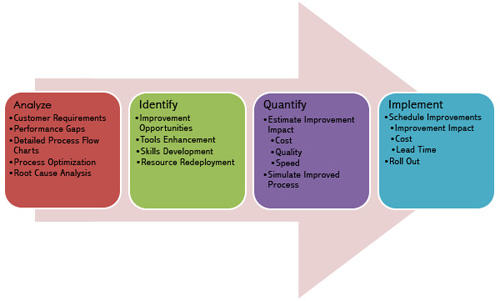PROCESS IMPROVEMENT
Process Improvement attempts to reduce variation and/or waste in processes, so that the desired outcome of the process can be achieved with better utilization of resources. It is a method to introduce process changes to improve quality, reduce costs, or accelerate schedules. Process Improvement can be done effectively and efficiently in conjunction with addressing other internal audit objectives, thus achieving better leverage of internal audit resources, because the skill sets required for both are the same.
Process Improvement works by:
- Defining the organization's strategic goals and purposes (Who are we, what do we do, and why do we do it?)
- Determining the organization's customers or stakeholders (Who do we serve?)
- Aligning the business processes to realize the organization's goals (How do we do it better for those we serve?)
Key Process Improvement Considerations
Processes need to align to business goals - An organization's strategic goals should provide the key direction for any Process Improvement exercise.
Customer focus -
Fast-changing customer needs underscore the importance of aligning business processes to achieve higher customer satisfaction. It is imperative in any Process Improvement exercise that the "Voice of Customer" be known, and factored in, when reviewing or redesigning any process.
Importance of benchmarks –
Process Improvement tools place a lot of emphasis on "measurable results". Accordingly, benchmarks assume an important role in any improvement initiative. Depending on the lifecycle of the process in question, benchmarks may be internal (within the organization), external (from other competing / noncompeting organizations) or dictated by the senior management of the organization as an aspirational target.
Establish process owners -
For any process to be controllable, it is essential that the process owner is clearly known and agreed upon.
Establish what constitutes success/failure of the process -
These success/failure levels also help establish "control limits" for the process, and provide a healthy check on whether or not a process is meeting the desired customer objectives.
Formal Process Improvement Model
